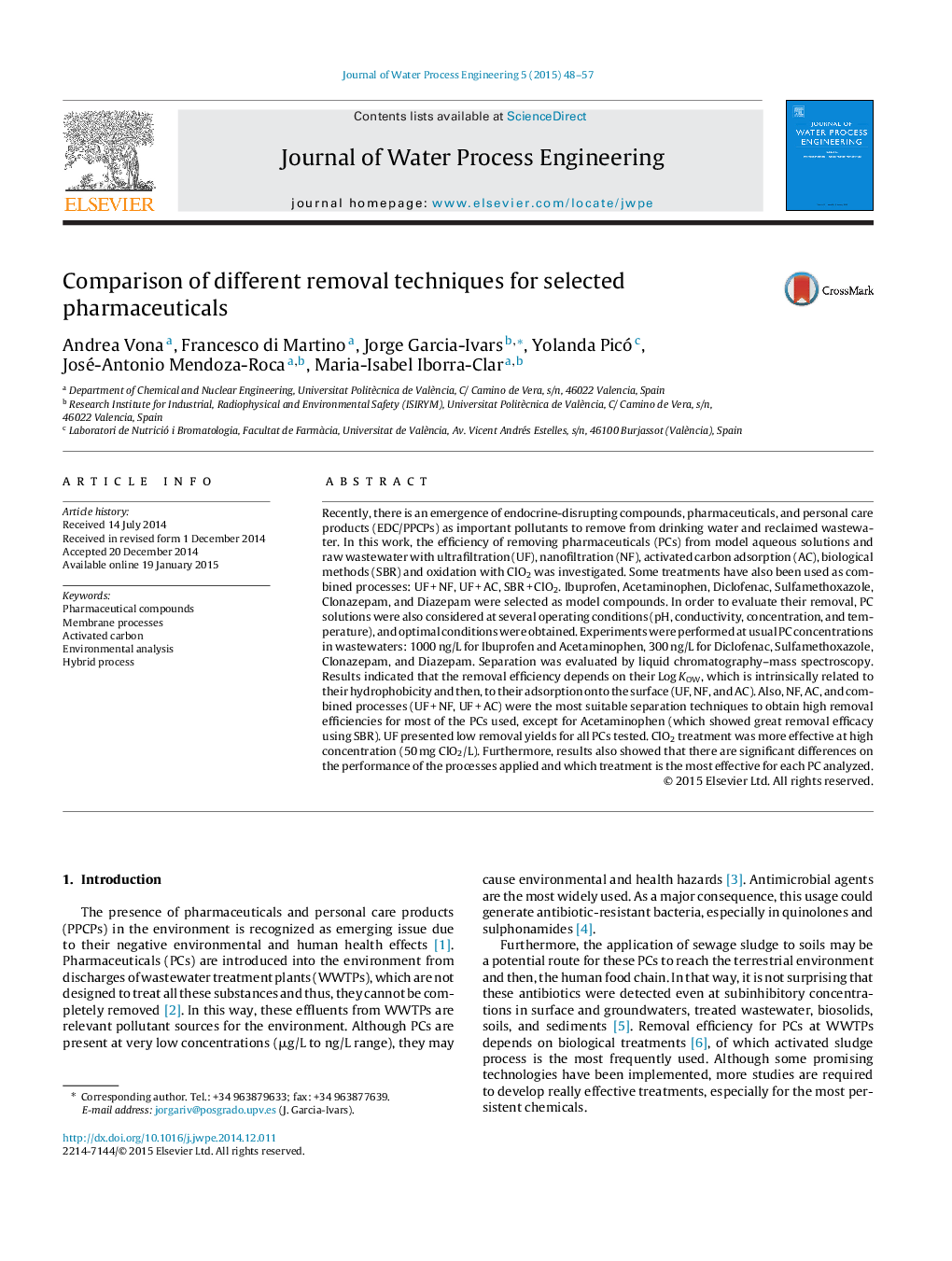| کد مقاله | کد نشریه | سال انتشار | مقاله انگلیسی | نسخه تمام متن |
|---|---|---|---|---|
| 232675 | 465297 | 2015 | 10 صفحه PDF | دانلود رایگان |
Recently, there is an emergence of endocrine-disrupting compounds, pharmaceuticals, and personal care products (EDC/PPCPs) as important pollutants to remove from drinking water and reclaimed wastewater. In this work, the efficiency of removing pharmaceuticals (PCs) from model aqueous solutions and raw wastewater with ultrafiltration (UF), nanofiltration (NF), activated carbon adsorption (AC), biological methods (SBR) and oxidation with ClO2 was investigated. Some treatments have also been used as combined processes: UF + NF, UF + AC, SBR + ClO2. Ibuprofen, Acetaminophen, Diclofenac, Sulfamethoxazole, Clonazepam, and Diazepam were selected as model compounds. In order to evaluate their removal, PC solutions were also considered at several operating conditions (pH, conductivity, concentration, and temperature), and optimal conditions were obtained. Experiments were performed at usual PC concentrations in wastewaters: 1000 ng/L for Ibuprofen and Acetaminophen, 300 ng/L for Diclofenac, Sulfamethoxazole, Clonazepam, and Diazepam. Separation was evaluated by liquid chromatography–mass spectroscopy. Results indicated that the removal efficiency depends on their Log KOW, which is intrinsically related to their hydrophobicity and then, to their adsorption onto the surface (UF, NF, and AC). Also, NF, AC, and combined processes (UF + NF, UF + AC) were the most suitable separation techniques to obtain high removal efficiencies for most of the PCs used, except for Acetaminophen (which showed great removal efficacy using SBR). UF presented low removal yields for all PCs tested. ClO2 treatment was more effective at high concentration (50 mg ClO2/L). Furthermore, results also showed that there are significant differences on the performance of the processes applied and which treatment is the most effective for each PC analyzed.
Journal: Journal of Water Process Engineering - Volume 5, April 2015, Pages 48–57
